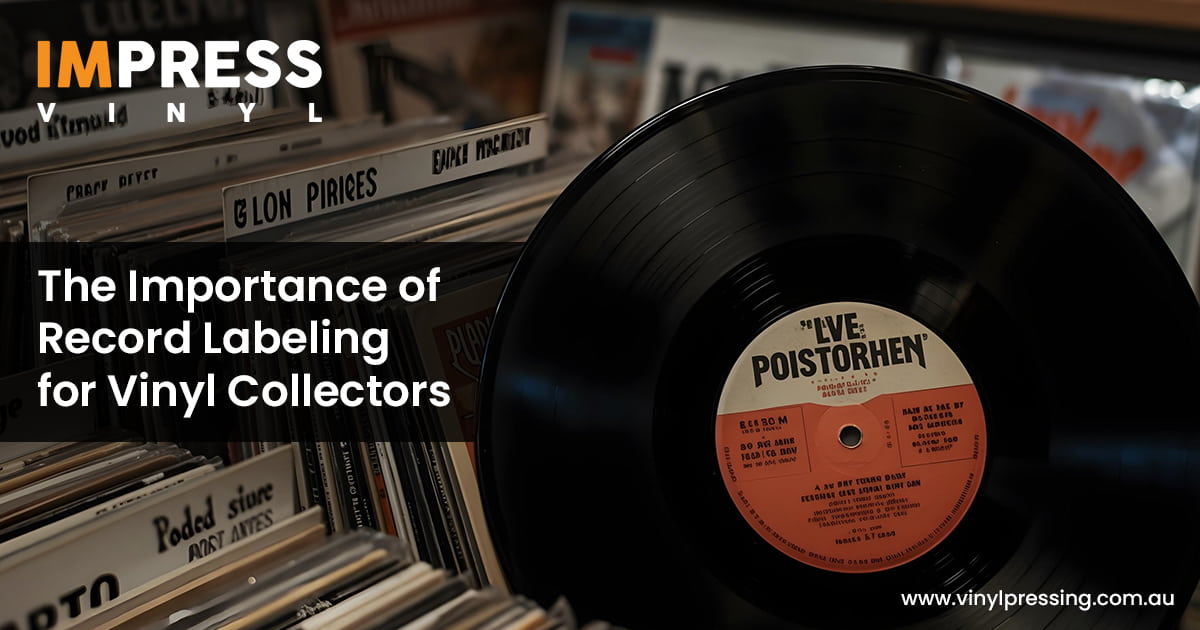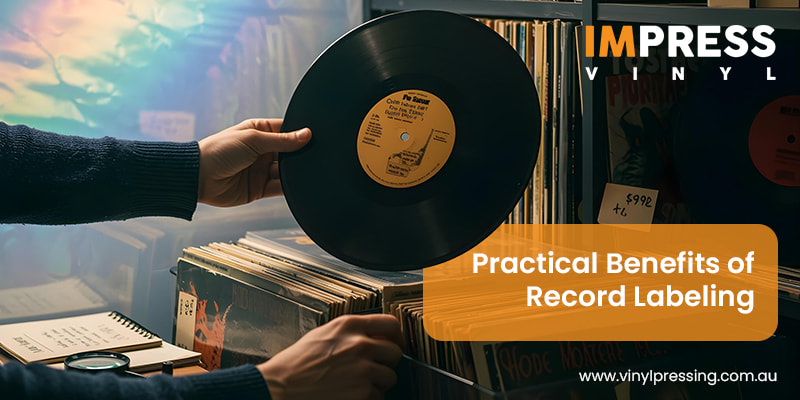The Importance of Record Labeling for Vinyl Collectors

Have you ever found a dusty vinyl in a thrift shop and asked yourself if it is a rare gem or just another common record? For collectors the answer is often in the vinyl record labels at the center. That circle of text and design is more than decoration. It tells stories of vinyl record pressing plants and even mistakes that turned into valuable treasures.
Vinyl collecting is about sound. It is also about history and discovery. The record labeling is the link between music and its backstory. It guides collectors through decades of artistry and production thus transforming a simple disc into a piece of cultural history.
Why Record Labels Matter More Than You Think
At first glance, a record label looks simple—just a logo, song titles, and maybe a color variation. But for serious collectors, vinyl record labels are like fingerprints. Each one reveals information about:
- The pressing (first edition vs. reissue)
- The era it was made in
- The country of origin
- The authenticity of the release
Think of them as a secret language for collectors.
The Historical Significance of Labels
Some labels themselves are legendary. Owning personalized vinyl records from Motown or Chess Records or Blue Note is like holding a straight connection to cultural revolutions in music. It’s not just a record, it’s a piece of the time when music was shaping how people lived and felt.
- Blue Note Records became a symbol for the growth of jazz. Those deep blue labels are so iconic that fans can spot them right away and know they’re looking at something special.
- Motown was not just a record company—it symbolized an entire era of soul and R&B that shaped modern music.
- Island Records gave the world Bob Marley, turning reggae into a global phenomenon.
For collectors, a record label isn’t just a production stamp—it’s a cultural signature.
When Labels Change the Game
Picture this: two collectors at a record fair flip through crates and land on The Beatles’ Please Please Me. One vinyl has the familiar black-and-yellow Parlophone label, while the other shows a later silver-and-black version. To a beginner, they look nearly identical. But the black-and-yellow Parlophone? That’s the first vinyl record pressing from 1963—worth hundreds or even thousands depending on condition.
This is why record labeling details matter—they transform a simple record into a collector’s trophy.
Labels as Miniature Works of Art
Beyond information, labels are also art pieces in themselves. The psychedelic swirl of a 1970s label, the minimalist elegance of a classical pressing, or the bold typography of punk releases all reflect the era’s design trends.
Collectors often admire labels as much as cover art. Some even organize vinyl records or display records label-side-up in frames because the designs tell their own visual story.
Practical Benefits of Record Labeling

Beyond nostalgia and aesthetics, labeling offers everyday benefits for collectors:
Organization:
Helps organize vinyl records large collections by label or pressing.
Verification:
Prevents buying bootlegs or counterfeits.
Resale Value:
Well-documented records with label details command higher prices.
Preservation of History:
Labels ensure the story of the record isn’t lost over time.
How to Read Record Labels Like a Collector
Learning to decode vinyl record labels is essential for collectors. Here’s what to look for:
Catalog Numbers
Every pressing has a catalog number printed on the label. This helps identify the exact edition and pressing run.
Country of Origin
Labels often indicate where a record was pressed. UK and US pressings, for example, can differ drastically in value.
Font & Design Variations
Sometimes labels change design mid-run. A slight logo change, different color scheme, or even font style can signal whether you’re holding an early pressing or a reissue.
Matrix / Runout Codes
While technically etched into the vinyl itself, labels usually pair with matrix codes to confirm authenticity and rarity.
Special Logos or Markings
Look out for words like “PROMO,” “DEMONSTRATION COPY,” or “NOT FOR SALE.” Promotional pressings are often far rarer than commercial ones.
Labels as the Collector’s Compass
Without proper record labeling, vinyl collecting becomes guesswork. Labels act as a compass, guiding collectors through decades of music history. They separate common pressings from rarities and add depth to the joy of discovery.
For seasoned collectors, ignoring the label is like skipping the introduction to a great novel—you miss the context that makes the story unforgettable.
Conclusion
Vinyl record labels are far more than decorative circles at the center of a disc and an important part of vinyl collecting.
They also reveal authenticity, highlight cultural milestones and often transform an ordinary pressing into a rare and valuable treasure.
By learning to decode these details, collectors gain a deeper appreciation for both the music and the history behind every record.
At Impress Vinyl, we believe that collecting should be about more than sound, it should be about preserving stories, authenticity and artistry.
Want to learn more or start building a collection that truly impresses? Contact us today and take your vinyl journey to the next level.